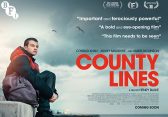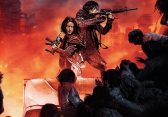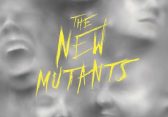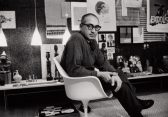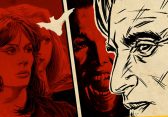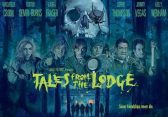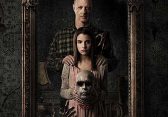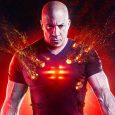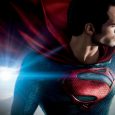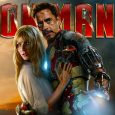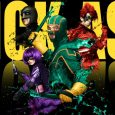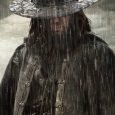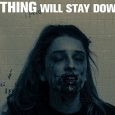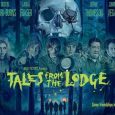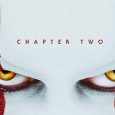Out of every comic book character in existence, I’m most knowledgeable about Judge Dredd. I started reading 2000AD at the age of 11, because my dad had a load of back issues from the late 70’s through to the 80’s. Even though the publication contains a plethora of other memorable characters such as Rogue Trooper, ABC Warriors and Strontium Dog, Dredd was the only one I really read. The world of Mega City One was ironically rich for an apparent wasteland, with a new criminal overlord rising to power every few issues. The unforgiving attitude of Dredd and imaginative ways he would ‘dispose’ of perps (that’s Judge-speak for criminal) was also what kept me hooked.
A few years later, I discovered what I’d always hoped: a movie version. Unfortunately, it was nothing like the comic I adored: any semblance of it disappeared as soon as Stallone removed the helmet. A vital part of what makes Dredd so awesome is we rarely saw him without his helmet, and even then his face is never shown. Fast forward seventeen years, and we have a ‘reboot’ which, unlike many others of the last few years, is wholly necessary. But does it do the character justice, or should it be sentenced to life in the iso-cubes?
Beginning with a voice over narrative by Dredd (Star Trek‘s Karl Urban) himself, he briefly explains the population problem in Mega City One, a sprawling, violent metropolis which houses 800 million people and has a crime rate of 17,000 reported incidents a day, and with the introduction of a new drug by the name of Slo-Mo that slows down the users perception of time to 1% of what it should be, matters are only getting worse. The only thing keeping the city from descending into total anarchy is the ‘judges’; a kind of police force that combines the jobs of judge, jury and (more often than not) executioner. Dredd is a veteran of the force, and during a routine patrol of a tower block with rookie Judge Anderson, a mutant with psychic abilities, he is tested to his limits when he discovers that the block is run by a ruthless gang leader known as Ma-Ma. She subsequently locks down the entire building, with orders to the residents to shoot the judges on sight. After capturing one of Ma-Ma’s closest allies and getting inside his head, Dredd and Anderson realise that there’s far more going on than here than a simple homicide.
As I said in the opening paragraph, the helmet is an essential part of Dredd’s persona, and it’s not ignored here. The first time we see Dredd, he’s ‘suiting up’ and him putting on the headgear is a focus point. From then on, it’s never removed, and this alone is a huge positive. Sticking with aesthetic design, Mega City One is as bleak, overcrowded and as unsightly as the comics depicted. The effects of Slo-Mo are beautifully visualized and captured by Cinematographer Anthony Dod Mantle. Director Pete Travis wastes no time in exhibiting said effects, with a high speed chase through Downtown Mega City One whilst the driver and his passengers are high on the drug. Their world is dazzlingly bright, and when they return to the grim reality that the city offers, it’s easy to see why the users yearn for the drug. It’s in these scenes that the compulsory 3D shines, with the achingly slow, dreamlike state highlighting effects such as smoke and water that are pushed to the forefront of your focus. It’s slightly relieving that those particular sequences are used sparingly, as the impact is still effective.
Karl Urban steps into Dredd’s size 12 (guessing the shoe size here…) boots with so much ease, you have to wonder whether his parents conceived him with the sole purpose of playing this role. Never cracking a smile, Urban has Dredd’s gruff, menacing line delivery down to a tee. The dialogue occasionally borders on the laughable, especially when Dredd churns out the one liners, but that’s all part of the fun. Relatively new-comer Olivia Thirlby makes her breakthrough into the mainstream as Judge Anderson, conveying the rookie judge perfectly. She exhibits Anderson’s amateur and uncomfortable nature comfortably, and her confidence arc is undeniably strong. Lena Headey plays the antagonist Ma-Ma well, however I wasn’t fully convinced by the villain. To turn a negative into a positive though, this film was more about introducing the character of Dredd to a new audience, so the bad guy (or girl in this case) wasn’t overly important, so in that respect the film succeeds. Wood Harris, most notably known as Avon Barksdale of the iconic TV series The Wire, provides acceptable support as Ma-Ma’s lead henchman Kay, but his screen time isn’t enough to show what the actor can really do; It’s good to see him back on screens though.
A week prior to viewing, I was extremely surprised to see that the film got slapped with an 18 age rating certificate. But now that I’ve seen it, an 18 is just about understandable. 10 years ago, there would be no question of the age rating, but with the leniency of content nowadays, I can’t see why this couldn’t have been a 15. Sure, there’s blood and killing, but as I said, there’s nothing here that really pushes it over the limit. One particular death had me squirming though: if you enjoy breathing, then you’ll know which one I mean.
Dredd 3D is the adaptation that fans of the comic have been waiting over three decades for. Urban encapsulates Dredd’s no-nonsense attitude sublimely, and looks like he’s having tons of fun whilst doing it. Which is especially difficult, considering the lack of smiling he does. Even people who have never read the strip will find something to like here; it’s bloody, fast paced and downright awesome.
Forget every other drokking new release and go see this, perps!



